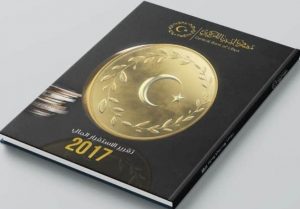By Sami Zaptia.

London, 23 July 2020:
The Financial Stability Unit of Libya’s eastern-based Central Bank of Libya said in its 2017 Annual Financial Stability report that there was an imbalance in the financial discipline of the state during the period 2011-2017.
This indicated that total spending by the Libyan state had exceeded the estimated amounts in the general budget by 51 percent, 61 percent and 70percent, during the period 2014-2016 respectively, so that the estimate of public spending exceeded the financial possibilities available, and was based on the financial needs of the various units and administrative bodies.
The report attributed the two shocks to the oil sector; the external shock, the fall in oil prices and the internal shock of the decline of oil exports, from which the Libyan dinar exchange rate against the U.S. dollar faced several disturbances in the black-market, with its trend towards decline.
Black-market exchange rate
The exchange rate of the Libyan dinar decreased in cash transactions in the black-market by an average of 8.85, 6.5, 3 and 1.8 between 2014-2017, respectively. The Libyan dinar exchange rate was reduced in cheque dealings in the black foreign exchange market with an average increase of 40% over the average cash exchange rate in black-market transactions during 2016-2017.
Cash hoarding, loss of confidence in banking sector
The report stressed the loss of confidence in the Libyan banking sector, which led to a 305.3% increase in the currency hoarded by the public in 2017 from 7.6 billion dinars in 2010. Currency held by the general public increased by a rate of 84%, 75%, 76%, 125%, 202%, and 256%, during the period 2011-2016 respectively.
Central bank split led to monetary instability
The report said that the current division at the Central Bank of Libya led to its inability to achieve its main goal of maintaining monetary stability, where it was noted that its use of temporary monetary policy instruments came late to suit the nature of the exceptional circumstances that the state is going through, resulting in the return of crises to the previous era.
The report pointed to the loss by the state financial system of one of its three pillars, the absence of the Libyan stock market, suspended since on 24 July 2014. This is considered one of the main channels in financing projects and expanding investment through its primary and secondary sectors.
The weakness of payment and adjustment systems that work to achieve the principles of safety and efficiency and different payment systems to meet the needs of users. The payment systems derive their importance from being one of the pillars of the definition of the Bank for International Settlements.
The report noted that the financial system in the Libyan state suffers from a lack of activation and stability in two of its main components, financial markets and legislative structure. In addition, there is a lack of confidence in the banking sector, the imbalance in the financial discipline of the state and the division of the Central Bank of Libya, the report concluded.
https://www.libyaherald.com/2020/07/22/financial-database-fundamental-to-building-stability-in-libyas-economy-cbl-beida-report/
https://www.libyaherald.com/2020/07/23/after-holding-meeting-to-listen-to-independent-critics-cbl-tripoli-is-criticised-for-failed-policies-and-urged-to-find-quick-solutions-to-critical-problems/
https://www.libyaherald.com/2020/07/22/libyan-economy-on-verge-of-collapse-because-of-oil-shutdown-former-banker/





